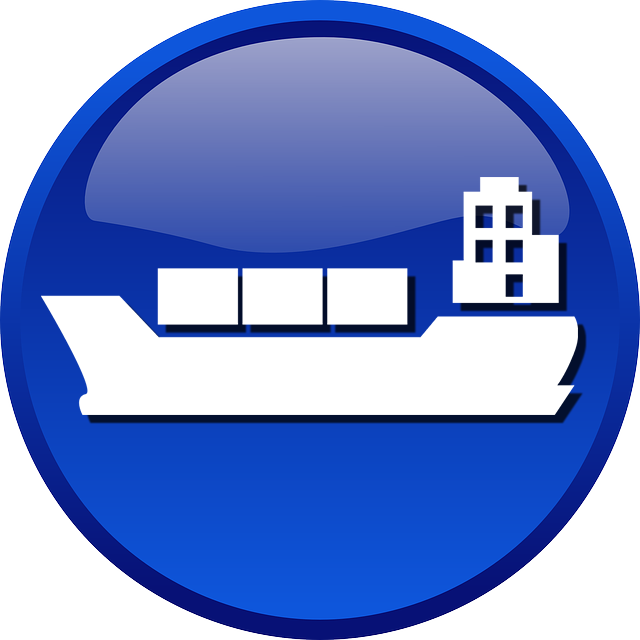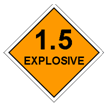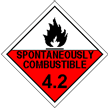Incoterms or international commerce terms is a
series of international sales terms that is widely used throughout the
world.
Incoterms 2000 provides a set of international rules, published by the
International Chamber of Commerce (ICC) effective 1 January 2000, for the
interpretation of the most commonly used trade terms.It divides transaction
costs and responsibilities between buyer and seller, reflects state of the
art
transportation practices and closely corresponds to the U.N. Convention on
Contracts for the International Sale of Goods. Incoterms deal with the
questions
related to the delivery of the products from the seller to the buyer. This
includes the carriage of products, export and import clearance
responsibilities,
who pays for what, and who has risk for the condition of the products at
different locations within the transport process.
E -TERMS
Ex works (EXW)
It means that the seller has the goods ready for collection at his premises
(factory, warehouse, plant) on the date agreed upon. The buyer pays all
transportation costs and also bears the risks for bringing the goods to
their
final destination.
F -TERMS
Free carrier (FCA)
It can be used for all modes of transportation including multimodal
transport.
The seller delivers the goods into the custody of the first carrier, and
this is
where the passing of risk occurs. The buyer pays for the transportation.
Free Alongside Ship (FAS)
It means that the seller pays for transportation of the goods to the port of
shipment. The buyer pays loading costs, freight, insurance, unloading costs
and
transportation from the port of destination to his factory. The passing of
risk
occurs when the goods have been delivered to the quay at the port of
shipment.
Free on Board (FOB)
It is similar to FAS, but the seller also pays for the loading costs.The
goods
are placed on board the ship by the seller at a port of shipment named in
the
sales agreement. The risk of loss of or damage to the goods is transferred
to
the buyer when the goods pass the ship's rail (i.e., off the dock and placed
on
the ship).
C -TERMS
Cost and Freight (CFR)
It means that the seller pays for transportation to the port of shipment,
loading and freight. The buyer pays for the insurance and transportation of
the
goods from the port of destination to his factory. The passing of risk
occurs
when the goods pass the ship's rail at the port of shipment.
Cost, Insurance and Freight (CIF)
It is a common term in a sales contract that may be encountered in
international
trading when ocean transport is used. When a price is quoted CIF, it means
that
the selling price includes the cost of the goods, the freight or transport
costs
and also the cost of marine insurance.CIF is identical in most particulars
with
Cost and Freight (CFR), and the same comments apply, including its
applicability
only to conventional maritime transport. In addition to the CFR
responsibilities, the seller under CIF must obtain in transferable form a
marine
insurance policy to cover the risks of transit with insurers of repute. The
policy must cover the CIF price plus 10 per cent and where possible be in
the
currency of the contract. Note that only very basic cover is required
equivalent
to the Institute "C" clauses, and buyers should normally insist on
an
"all-risk" type of policy such as that under the Institute "A"
clauses. The seller's responsibility for the goods ends when the goods have
been
delivered to the marine carrier or have been delivered on board the shipping
vessel, depending upon the terms of the contract.This term is only
appropriate
for conventional maritime transport, not ro/ro or international container
movements.
Carriage Paid To (CPT)
It can be used for all modes of transport including multimodal transport.
The
seller pays for the freight to the named point of destination. The buyer
pays
for the insurance. The passing of risk occurs when the goods have been
delivered
into the custody of the first carrier.
Carriage and Insurance Paid to (CIP)
It can be used for all modes of transport including multimodal transport.
The
passing of risk occurs when the goods have been delivered into the custody
of
the carrier. It is the same as CPT except that the seller also pays for the
insurance.
D - TERMS
Delivered At Frontier (DAF)
It can be used when the goods are transported by rail and road. The seller
pays
for transportation to the named place of delivery at the frontier. The buyer
arranges for customs clearance and pays for transportation from the frontier
to
his factory. The passing of risk occurs at the frontier.
Delivered Ex Ship (DES)
It means that the seller has to pay for the same as in CIF, but the passing
of
risk does not occur until the ship has arrived at the port of destination,
but
before the goods have been unloaded.
Delivered Ex Quay (DEQ)
It means the same as DES, but the passing of risk does not occur until the
goods
have been unloaded at the port of destination.
Delivered Duty Unpaid (DDU)
It means that the seller pays for all transportation costs and bears all
risk
until the goods have been delivered, but does not pay for the duty.
Delivered Duty Paid (DDP)
It means that the seller pays for all transportation costs and bears all
risk
until the goods have been delivered and pays the duty.
|


















